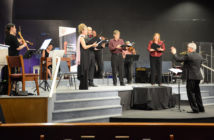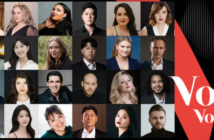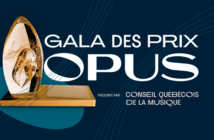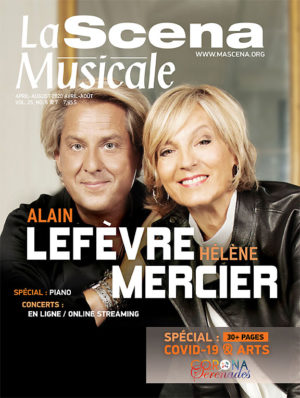
This page is also available in / Cette page est également disponible en:
![]() Francais (French)
Francais (French)
As of July 13, the Quebec government will make face masks mandatory for people using public transit. With some exceptions, the City of Toronto has also made masks mandatory in indoor public spaces, as has the City of Côte St-Luc. The City of Montreal will enact a similar measure at the end of July.
Previously, despite mandatory practice in Asia, Canadian health experts claimed that masks were not helpful in stemming the spread of the virus, citing a lack of scientific evidence. We now can conclude that government were acting strategically to prevent the public from purchasing medical masks prioritized for frontline medical workers, who are exposed to virus particles at far higher levels.
In early June, the World Health Organization stated that “in light of evolving evidence, the WHO advises that governments should encourage the general public to wear masks where there is widespread transmission and physical distancing is difficult, such as on public transport, in shops or in other confined or crowded environments.”
However, the information now provided by world health experts on masks indicate that there is a hierarchy of filtration effectiveness for masks in preventing the spread of COVID-19. The general public have been encouraged to wear non-medical masks that can be made at home or bought from various retailers.
The N95 respirator is the most effective face mask against the spread of the coronavirus. “N95” is a designation given to masks that are able to filter at least 95% of viral particles and are approved by Health Canada for use by healthcare workers. But they also have a downside; they are difficult to make and have an expiry date. And according to an article on the Healthline website, N95 masks that come with front valves that act as ventilators to increase the breathability of the mask for its wearer actually do more harm than good by allowing unfiltered air to be exhaled, defeating the purpose of wearing a mask. “The virus can be transmitted through the valves, which offer no filtration at all,” states Dr. Ali Raja, an associate professor at Harvard Medical School.
Surgical masks are the next-best alternative to the N95. They are loose-fitting but still filter out between 62% to 80% of respiratory particles, depending on the manufacturer. A 2016 scientific study published by the Canadian Medical Association Journal on the effectiveness of masks portrayed surgical masks as almost as effective as N95 respirators.
Non-medical masks are an inexpensive alternative to medical masks in addition to being environmentally friendly. The WHO and the Government of Canada have even posted the minimum requirements for DIY facemasks that can be made at home. Notably, the Government of Canada recommends that non-medical masks should have at least two layers of material fabric (cotton or linen) woven tightly and should “not be made of plastic or other non-breathable materials, [should]not be secured with tape or other inappropriate materials, [should]not be made exclusively of materials that easily fall apart, such as tissues.”
The WHO interim guidance issued in early June states that “the ideal combination of material for non-medical masks should include three layers as follows: 1) an innermost layer of a hydrophilic material (e.g., cotton or cotton blends); 2) an outermost layer made of hydrophobic material (e.g., polypropylene, polyester, or their blends) which may limit external contamination from penetration through to the wearer’s nose and mouth; 3) a middle hydrophobic layer of synthetic non-woven material such as polypropylene or a cotton layer which may enhance filtration or retain droplets.”
The WHO guidance further proposes that “it is preferable not to select elastic material for making masks; during wear, the mask material may be stretched over the face, resulting in increased pore size and lower filtration efficiency throughout use. […] Fabrics that can support high temperatures (60°F or more) are preferable.”
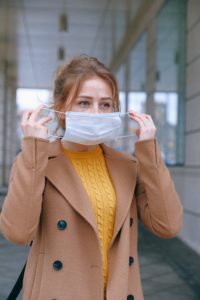 Bandanas are one of the worst home-made masks and should be a last resort for anyone seeking protection, as a folded bandana’s efficiency is only 9.65%. According to Public Health Ontario, “certain fabrics (e.g., towels and scarves) had slightly lower penetration (around 20-80% for towels, increasing with particle diameter), which was noted by the authors to be comparable to other studies of surgical mask penetration levels (measured in cited studies ranging from 51-89%).”
Bandanas are one of the worst home-made masks and should be a last resort for anyone seeking protection, as a folded bandana’s efficiency is only 9.65%. According to Public Health Ontario, “certain fabrics (e.g., towels and scarves) had slightly lower penetration (around 20-80% for towels, increasing with particle diameter), which was noted by the authors to be comparable to other studies of surgical mask penetration levels (measured in cited studies ranging from 51-89%).”
According to a U.S. study from the Wake Forest Baptist Medical Center, “the best homemade masks achieved 79% filtration as compared to surgical masks (62% to 65%) and N95 masks (97%). But other homemade masks tested performed significantly worse, sometimes demonstrating as little as 1% filtration.”
“The best-performing design was constructed of two layers of high-quality, heavyweight ‘quilter’s cotton’ with a thread count of 180 or more, and those with especially tight weave and thicker thread such as batiks. A double-layer mask with a simple cotton outer layer and an inner layer of flannel also performed well,” the study stated.
There are as many home-made facemask options as there are fabrics, but being aware of the hierarchy of fabric effectiveness when making or choosing masks is vital. “We don’t want people to think that just any piece of cloth is good enough and have a false sense of security,” the study concludes.
Face mask Price Check
Prices for face masks have changed over time and the retailer. In April, disposable medical masks were about $60 per box of 50 at a pharmacy. In May, non-medical masks at Costco were about $30 for a box of 50 and in June they decreased to $25 per box of 50. Non-medical masks at Canadian Tire were $40 per box of 50 and $38 for a box of 50 at Reno-Depot. Don’t forget the metal part is on top, and to press on the bridge of your nose to fit the mask on your face.
An individual reusable face mask from TakeCare Supply cost $9.50 in March, but are now $37.50 for a three-pack. Roots Canada currently offers an individual cotton mask for $22, while it’s $15 at The Bay.
This page is also available in / Cette page est également disponible en:
![]() Francais (French)
Francais (French)



